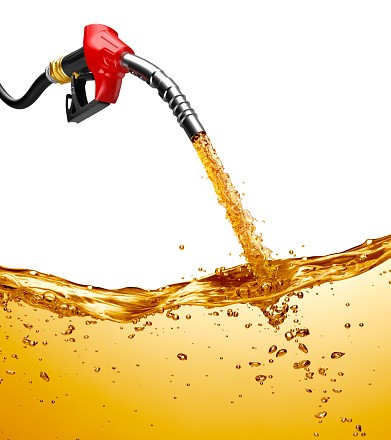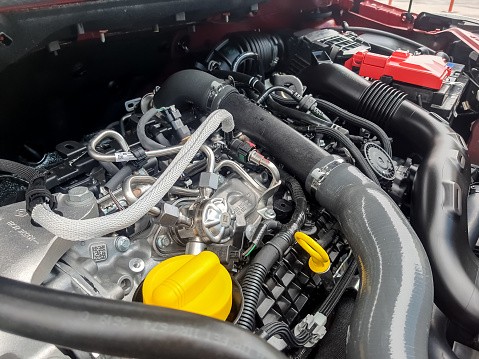A fuel pump relay is an important component in the starting system of most cars. It is usually located in the fuse box under the hood. The relay acts as a switch to turn the fuel pump on when the engine is started. If the relay is faulty, it can cause problems with starting the engine. In this article, we will show you how to test a fuel pump relay to see if it is working properly.

The first step in testing the fuel pump relay is to locate it. It will usually be located in a box under the hood. You can consult your vehicle’s owner’s manual for information about where it is located. Once you have located it, remove the cover from the fuse box and locate the relay.
Once you have found the relay, you will need to disconnect it from its power source. This is done by removing the plug that connects it to the battery. Then, use a test light or multimeter to check if there is power coming into and out of the relay when you turn on the ignition switch. If there is no power, then your fuel pump relay has probably failed and needs replacing.
Now that you have tested the fuel pump relay, it is time to reinstall it. Make sure that you reconnect the plug securely and then replace the cover on the fuse box. Your vehicle should now start without any issues. If it still does not start, then your problem may be elsewhere in the starting system and needs further troubleshooting.
What Are The Common Causes Of A Fuel Pump Relay Failure?
The fuel pump relay is an important part of your car’s engine, and when it fails, it can cause a lot of problems. In this article, we’ll discuss the most common causes of fuel pump relay failure and how to prevent them.

The most common cause of fuel pump relay failure is a faulty connection or wiring. If the connections and wires become loose, it can create an electrical short circuit, meaning that electricity isn’t able to flow properly through the system. This can lead to the fuel pump not working at all, resulting in your engine not starting or running smoothly. It’s important to regularly check the wiring and ensure that all connections are secure.
Another problem that can cause fuel pump relay failure is if dirt and debris build up on the contacts in the relay itself. Over time, this buildup will create electrical resistance which can stop the relay from functioning correctly. Regularly cleaning out any dirt or debris should help prevent this issue from occurring.
In addition to these problems, damaged or worn-out fuel pump relay components can also cause failure. If the contacts become corroded or worn out, they won’t be able to make a proper connection, which in turn will prevent the relay from functioning correctly. Replacing old parts with new ones is an effective way of preventing this issue.
Lastly, if your car has been sitting unused for a long time, then it’s possible that the fuel pump relay could have seized up due to lack of use. This can cause it to fail when you attempt to start your car again. To help prevent this problem, make sure that you start your car regularly and take it for regular drives so that all its systems are working properly.
Overall, fuel pump relay failure can be a serious issue for your car, but it can often be prevented by regularly checking the wiring and connections, keeping an eye out for dirt or debris buildup, replacing old components and ensuring that your car is regularly being used. If you follow these tips, you should be able to keep your fuel pump relay in good condition and avoid any problems down the line.
What Are The Symptoms Of A Failing Fuel Pump Relay?
The symptoms of a failing fuel pump relay can vary depending on the make and model of the vehicle. However, common symptoms may include difficulty starting the engine, engine misfiring, or a decrease in fuel economy. If you suspect that your fuel pump relay is failing, it is important to have it inspected and replaced if necessary.
One of the most common symptoms of a failing fuel pump relay is engine misfiring or stalling. When the relay fails, it can cause an inadequate supply of fuel to reach the engine, resulting in an inconsistent flow of power. As a result, your vehicle may experience difficulty starting and sputtering when accelerating or driving at higher speeds.
Another symptom that may be present is decreased fuel economy. When the fuel pump relay has failed, it can cause more fuel to be delivered to the engine than is necessary, reducing its efficiency and causing you to use more gasoline while driving. If this occurs frequently, then it could indicate that your fuel pump relay needs to be replaced promptly.
The final symptom that you should look out for is difficulty starting your engine. If the fuel pump relay has failed, it can stop the flow of fuel from reaching the engine, resulting in a failure to start. This symptom may be more prominent if you have an older vehicle model or are using a lower-quality fuel pump relay that is prone to failing prematurely.
Conclusion:
That’s how you test a fuel pump relay! With this knowledge, you can keep your car running smoothly and avoid any starting issues.
You May Also Like The Following:
